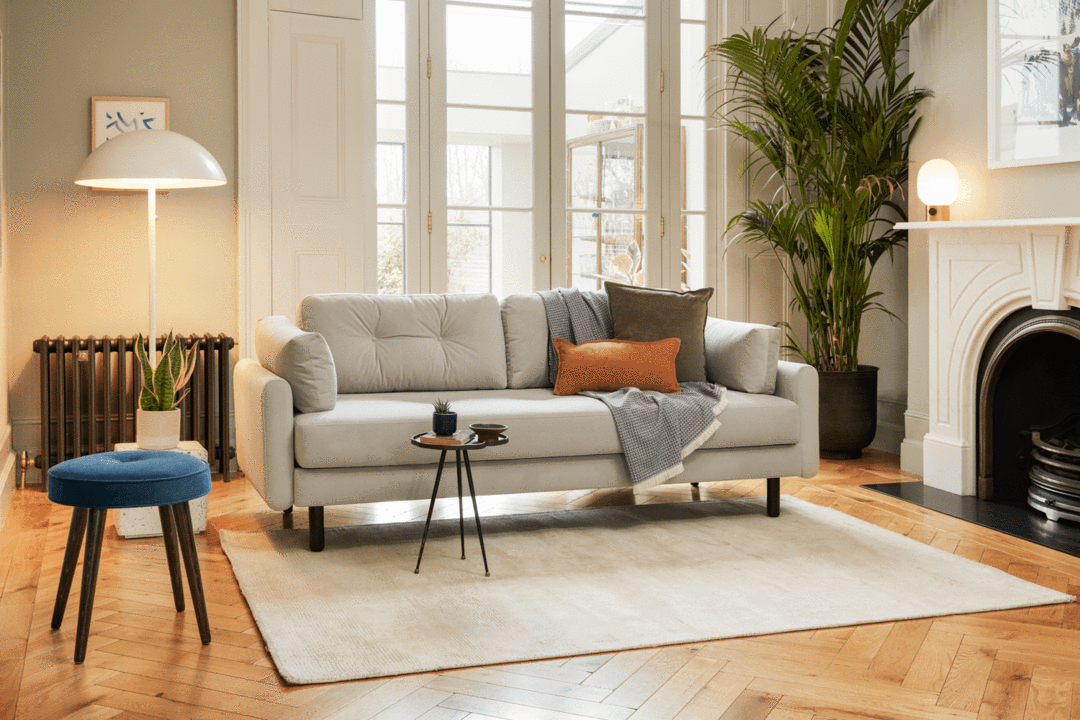Cushion etiquette: everything you need to know about cushions

Cushion etiquette: everything you need to know about cushions
Cushions, we all have them and (mostly) love them. They have the power to make or break a room and can often be overlooked. But, no matter how you feel about cushions, they’re an important accessory to get right.
Cushion etiquette is big in the interiors world. You may, or may not, be familiar with the ‘chopping’ technique seen in most interior lifestyle photoshoots. Chopping is one of the best ways to make your cushions dinner party-ready, adding a premium look and feel to your living room. Alongside ‘chopping’, there are a multitude of considerations to make when it comes to cushions and cushion arrangements, so in this blog we delve into all the ways you can make the most out of your cushions.
Do we actually need cushions?
Some argue cushions aren’t a necessity, acting only as an aesthetically pleasing accessory. Take a well-presented bed as an example; cushions placed on top of a pillow have no real use apart from making the bed look inviting.
Can the same be said for a sofa? Well, it depends on the type of sofa. If you have a squishy, comfortable sofa then the only real need for a cushion is to bring the room together, to help accentuate the interior’s colour scheme and to make the sofa even more comfortable. However, if the sofa doesn’t fulfil your comfort needs, a cushion or two might very well be the answer. A bad sofa can cause back or neck pain, so a collection of cushions can make a real difference.
Is there a best way to arrange cushions?
There’s no one specific rule when it comes to cushion arrangement. It often involves thinking about what look you’re going with, the type of sofa, its style and colour. There are a huge variety of cushion arrangements that will work, just make sure to take a step back, so you can see how the arrangement fits with the whole interior.

Top tip: to get the best look for your cushions, we always size up the insert. When choosing the filling size, get a size bigger than the cover you have, this helps shape the cushion and make it seem fuller.
What cushion filling is best?
Most cushions are made from synthetic wadding or foam. It’s a cheaper way to make cushions but promises they will hold shape for longer. Usually you get what you pay for and cushions are no exception, synthetic wadding is not known for its comfort.
For the ultimate comfort cushion, use a filling made from natural materials, such as feather or down. These materials might need more maintenance as they easily and often lose their shape, so should be plumped daily. However, they are guaranteed to last and promise to be a good investment.
What shape or size cushion should we use?

There are a multitude of cushion shapes and sizes: from bolsters to squares, rectangles to circles, small to extra large. There is a cushion for everyone.
Again, there are no rules when it comes to cushion sizes and how they are arranged. Experiment with mixing different shapes, sizes, textures and tones together. You will get a feel of what works and what doesn’t, depending on the colour scheme of your interior.
How to make the chop

Photo by James Hollingworth on Unsplash
Hi-YAH!
Chopping is a term or technique interior designers use to ensure they get the right look on photoshoots. It involves chopping the top and sides of the cushion with the side of your hand, while channeling your inner Jackie Chan. This forms a V-shaped dent in the cushion, creating a more stylised look. Perfect for those with feather or down filled cushions as they can more easily keep shape compared to synthetic fillings.
How to arrange them for a more relaxed feel?
Don’t like cushions to look ‘chopped’ or too formal?
Instead of going for a symmetrical or clean look, group the cushions together in one corner of the sofa. Use odd numbers to create a more relaxed feel; a three cushion arrangement usually works, two at the back and one placed at the front in the middle.
Texture, pattern, prints or simple block colours. How to choose?
This very much depends on the interior style and colour scheme. For example, Scandinavian design encourages neutral, textured accessories like cushions. Whereas, a maximalist style will promote bold, block colours and bright patterns or prints.

It also depends on the colour of the sofa. If your sofa and room follows a neutral colour scheme, introducing directional or accent colours with cushions will bring the room together. Alternatively, if the sofa is a bright colour, adding neutral coloured cushions will help tone down and balance the room.
The main rule is to not overdo the colours you’re working with, make sure to keep the room balanced. Using more than one to two pattern or print cushions on the sofa is probably too much. If you want to use pattern or print, have one patterned or printed cushion and mix with two neutral or plain coloured cushions. Try to keep it simple.
---If you’ve enjoyed this blog, you might also like: ‘6 accessory ideas to get your home ready for autumn’ or ‘20 cosy grey living room ideas and styles’ or ‘minimalism vs maximalism: what’s the difference?’.





